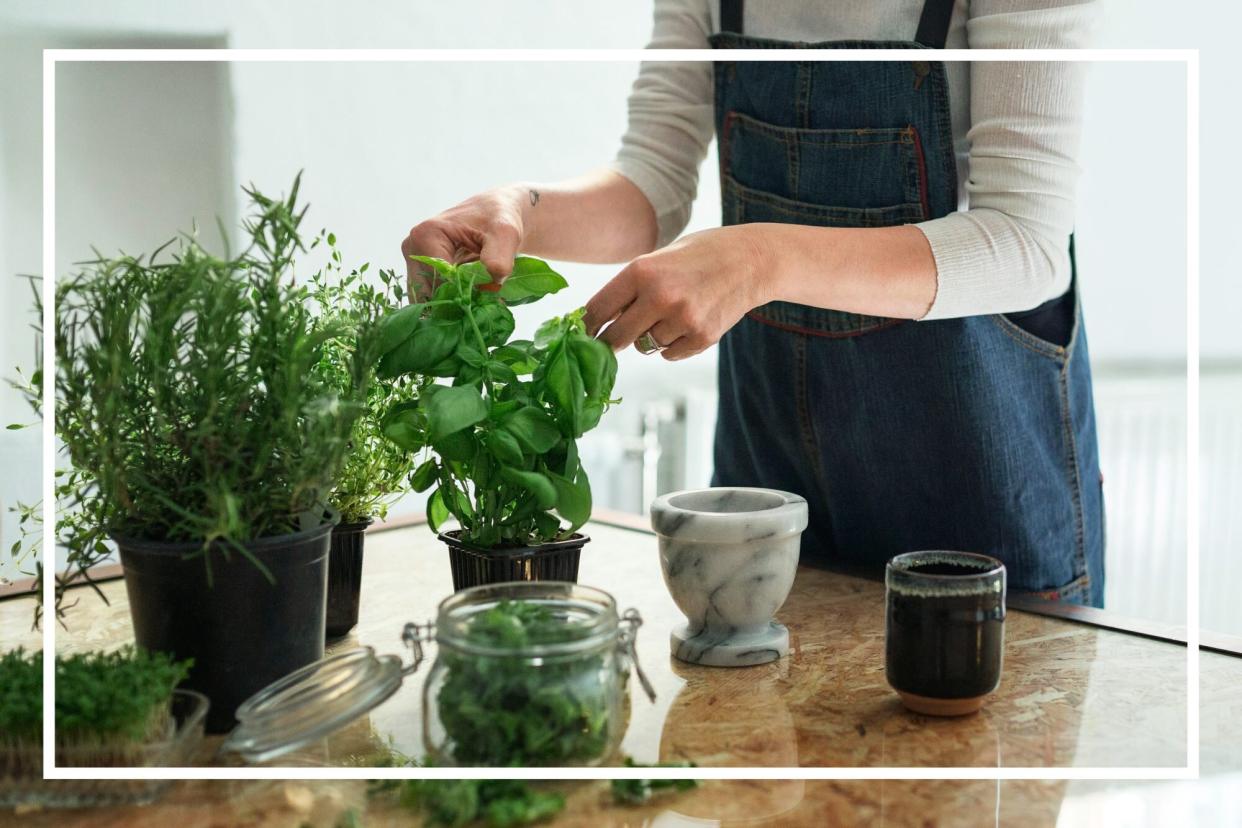How to Use the Five Most Common Herbs

Johner Images/Getty
Herbs give food a more complex flavor and also provide major health benefits, says herbalist Jennifer McGruther, the author of Vibrant Botanicals (Buy It, $22, amazon.com). "Most are a rich, dense source of micronutrients and antioxidants," she says.
And spring and summer are great times to enjoy them, as farmers markets are filled with the most common herbs and their varieties in these seasons. Fresh herbs aren't just for garnishes, either: Use them as fresh finishers scattered over your dishes; toss them into sauces, dips, and pesto; or bring some earthiness to fruity and chocolaty desserts. (Better yet, use them in these creative, herb-heavy recipes.)
Before you toss a handful into whatever dish your concocting, study this guide to the most common herbs to make sure you bring the best — and freshest — flavors to it.
Available at Amazon
Mint
Sweet and refreshing, this common herb comes in over 600 varieties and has an energizing effect. Research shows this herb also helps with digestion, so add it to your dishes when your gut needs a pick-me-up. (Related: What Is a Gut-Healing Diet, Really?)
How to use mint: Sprinkle the leaves over fresh berries, melons, or plums with a drizzle of honey. Add some fresh mint to hibiscus iced tea. Or enjoy a cup of hot mint tea after a meal — just steep a handful of mint sprigs in some boiling water.
Parsley
The grassy flavor and deep-green color of this common herb adds vibrancy to dishes, and depending on the variety you use, can liven up heavy meals; flat-leaf parsley has brighter notes than the curly-leaf kind. Plus, parsley is rich in antioxidants, vitamin K, and beta-carotene.
How to use parsley: Parsley is actually a member of the carrot family. Go back to its roots by making a fresh parsley sauce (simply combine it with olive oil and garlic), and top grilled or roasted carrots with it. (Or use them as a garnish for some vegan-friendly carrot bacon.)
Chives
Chives have delicate notes of onion and garlic, so they're a great alternative to those alliums if they're too pungent for your tastebuds. Another perk: This common herb has been found to have anti-inflammatory properties.
How to use chives: Blend chopped chives into cashew cream to make a punchy plant-based spread. Add chive blossoms to salads, or steep them in vinegar and use in a vinaigrette.
Sage
This common herb's earthy taste is punctuated with hints of mint, lemon, and pepper, and it even comes with a few health benefits: Sage contains active compounds that studies show may help improve memory, concentration, and mood.
How to use sage: Quickly sauté sage leaves in a skillet with olive oil until crisp, and garnish savory or sweet dishes with them. Add chopped sage to a tomato sauce. Muddle the herb with blackberries, lime juice, and honey, and use as the base for a summer cocktail.
Rosemary
Rosemary has an intoxicating woody flavor and aroma, and it's been shown to help boost mental clarity, increase concentration, and also improve memory.
How to use rosemary: Sprinkle rosemary over vegetables before grilling or roasting them. Finely chop it, and add to a marinade. Garnish dishes with rosemary blossoms, which bloom in the spring and summer.

